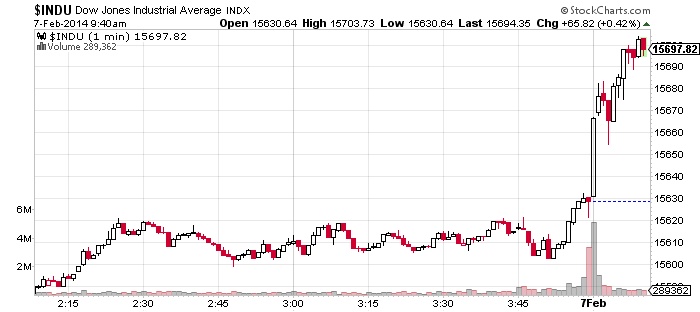On Friday, we learned that the U.S. economy added a lower-than-expected 113,000 jobs in January and the “official” unemployment rate had dropped to 6.6% from 6.7% in December. (Source: Bureau of Labor Statistics, February 7, 2014.)
How can we create so few jobs and have the unemployment rate improve? It’s because the way the government calculates the unemployment rate is skewed. (It gets me outright mad to listen to politicians tell us the jobs market is getting better, when in fact, it’s not.)
The most obvious problem with the government’s way of calculating the unemployment rate is that it excludes people who have given up looking for work and those who have part-time jobs but want full-time jobs. If we were to include those two groups, the underemployment rate (as it is referred to) sits at 12.7%—and it’s been above 12% for a very, very long time. (This is something you didn’t hear President Obama talk about in his State of the Union speech two weeks ago.)
Now if we look a little deeper, we discover a much bigger problem in America. People who have the ability to work are leaving the jobs market!
What I’m talking about is the catastrophic decline in labor force participation in the U.S. economy.
Take a look at the chart below. It illustrates the labor force participate rate.
You will note that from about 2002, which is the same year gold prices started moving up, the percentage of the U.S. population in the labor force started to collapse.
Labor force participation is simply the number of people who are employed plus those people looking for jobs in the U.S. economy. Those Americans between the ages of 16 and 64 who have stopped looking for jobs, or who are not working, are not included in the labor force participation rate.
Going back to my original question, why have so many Americans stopped looking for work? Could it be that the number of government assistance programs and the amount of money people can collect from the government if they are not working discourages people from looking for work? Could it be that single-wage-earner families (like we had in the 1960s; think The Dick Van Dyke Show or Leave It to Beaver, if you can remember them) are back? Or could it be that the jobs are just not there?
Individuals moving away from the jobs market at a rate that is much faster than the rate at which jobs are being added to the economy is not a good thing.
Based on what I just told you (how I just tore up last Friday’s jobs market report), I think it’s safe to say the jobs market report released on Friday created a false optimism that the U.S. economy is improving.
Please look at this second chart below of what happened to the stock market when it opened on Friday after the jobs market report was released.
 Talk about a bear coming up with an excuse for stock prices to rally!
Talk about a bear coming up with an excuse for stock prices to rally!
Dear reader, my number-one priority today is to preserve my capital. This false sense that the U.S. economy is improving will eventually push stock prices well below where they are today.
When stock prices rise, the theory of “regression to the mean” seems to be forgotten far too quickly. But on the contrary, it is an adage investors should live by, because in the end, when investments get too pricey (think tech stocks in 1999, real estate in 2005, and the stock market in 2007), they always regress to the mean (fall back to their historic valuations).
Disclaimer: There is no magic formula to getting rich. Success in investment vehicles with the best prospects for price appreciation can only be achieved through proper and rigorous research and analysis. The opinions in this e-newsletter are just that, opinions of the authors. Information contained herein, while believed to be correct, is not guaranteed as accurate. Warning: Investing often involves high risks and you can lose a lot of money. Please do not invest with money you cannot afford to lose.
